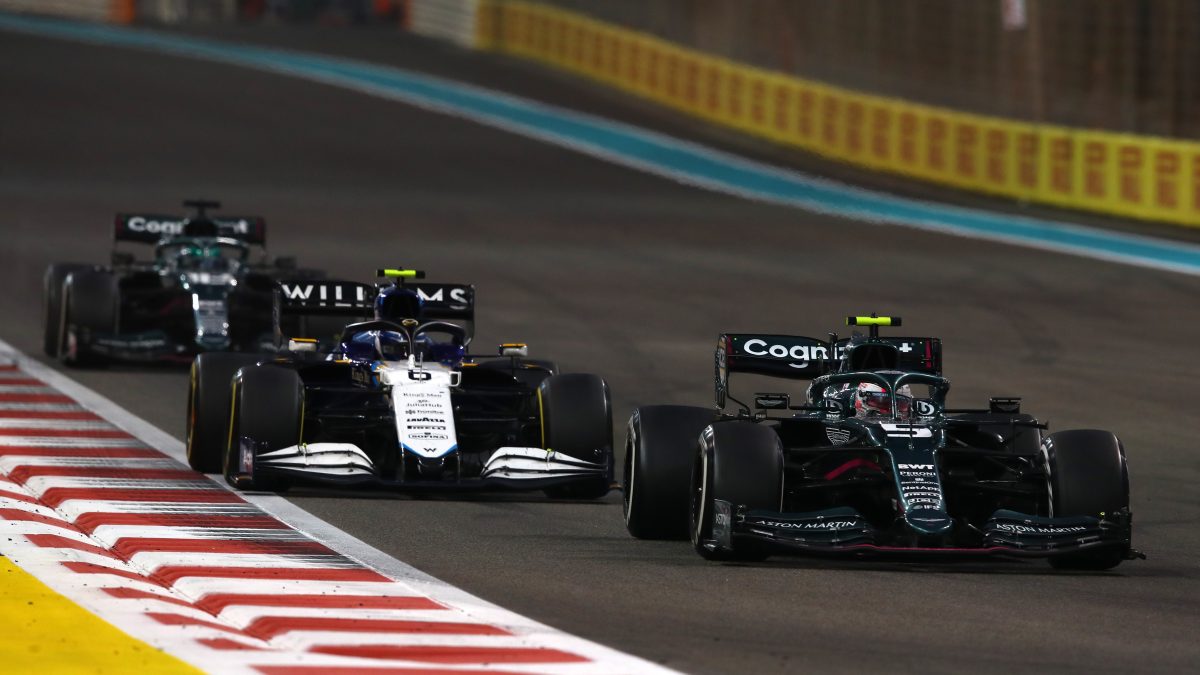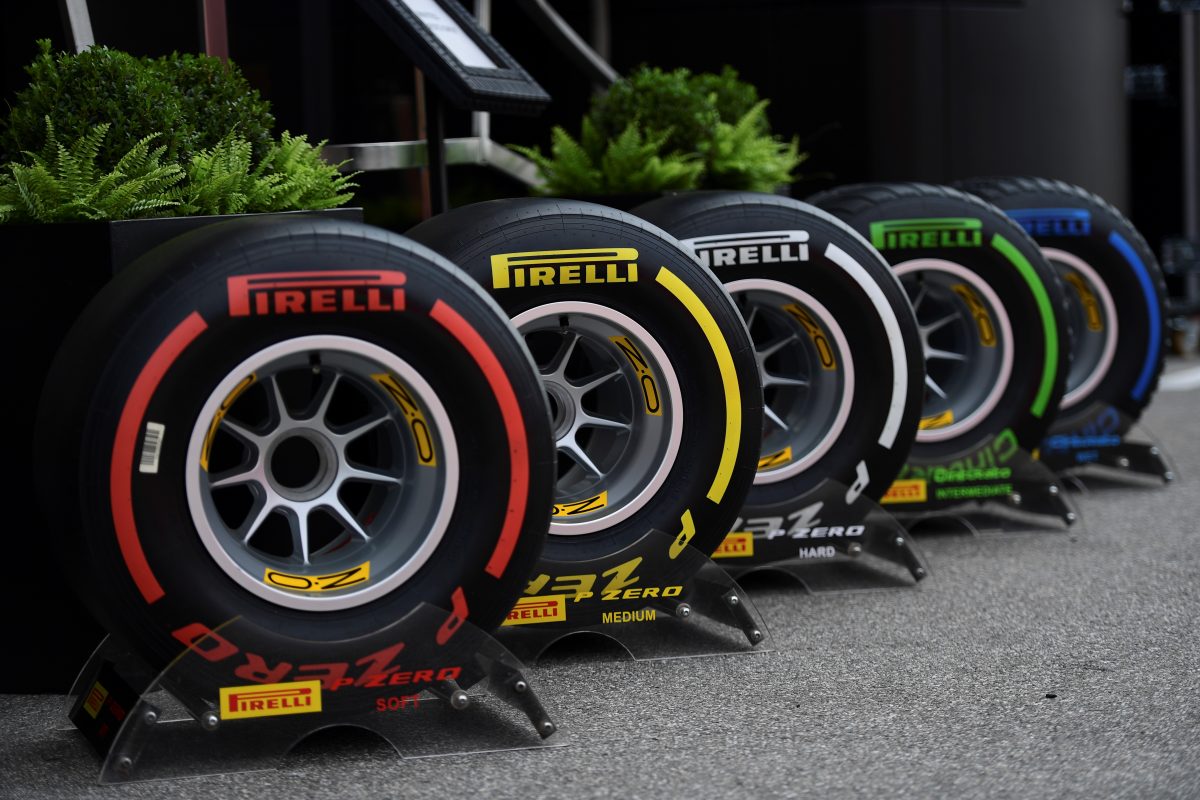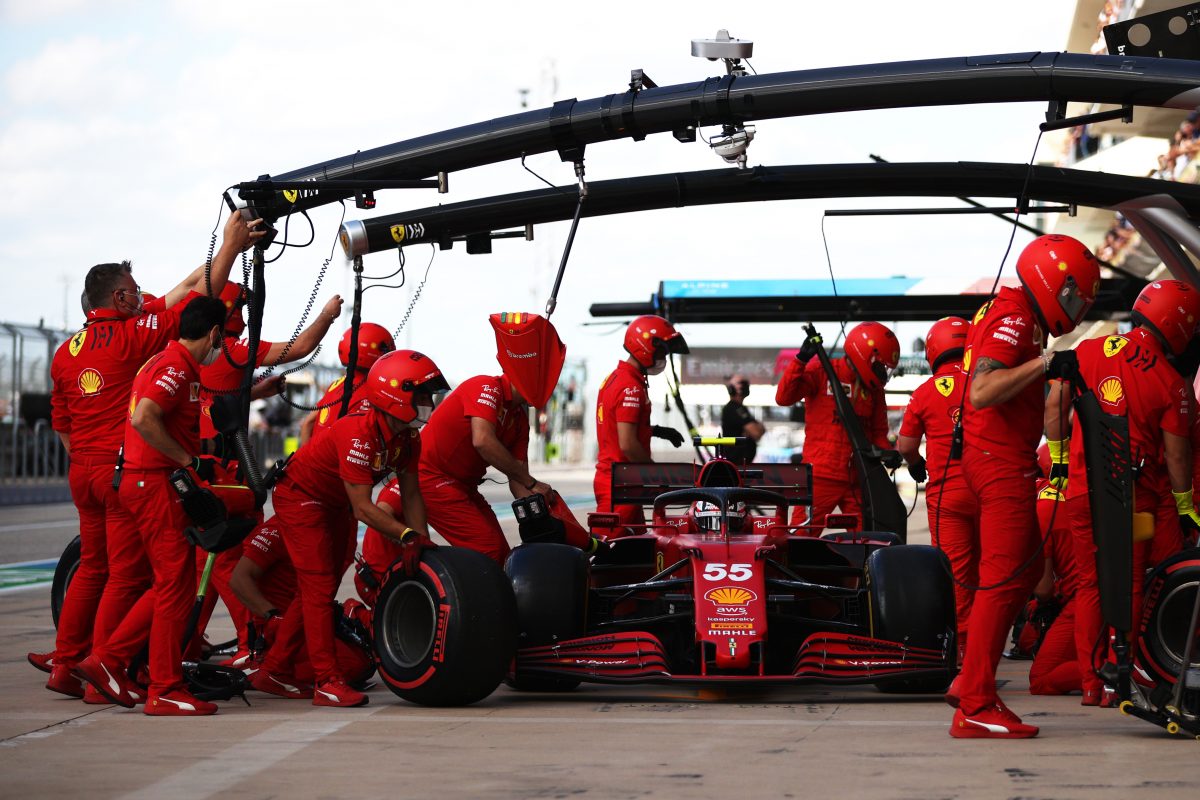Racing in Formula 1 is hard, but understanding the sport shouldn’t be. In such a technologically sophisticated race series, it’s easy to get lost in all the jargon. A few frequently used terms in Formula 1 will get you out of the “dirty air” and into pole position for the upcoming racing season.
DRS
DRS stands for Drag Reduction System and has been getting a lot of attention in 2021. The system is installed on the car’s rear wing and activated by a switch on the steering wheel.
DRS works by opening a flap on the rear wing. That reduces the amount of aerodynamic drag, which increases the car’s top speed and acceleration.
The technology came in 2011 as a way to make overtaking easier. However, the drivers can’t use it whenever or wherever they want. DRS can only be active in dedicated zones on the circuit that get set before the race weekend. Most tracks have only one DRS zone, but occasionally two are used. The driver can only activate the DRS once he is within one second of the car in front when the cars pass through the DRS Detection Point.
It may seem like an overly complicated solution to the problem of overtaking a competitor, but it does add to the action of a Grand Prix weekend.
ERS
ERS refers to the Energy Recovery System of the F1 car. Previously referred to as KERS (Kinetic Energy Recovery System), ERS now encompasses all of the components in the system, not just the kinetic energy parts.
There are three major components of the ERS. The MGU-H, Motor Generator Unit – Heat, which recycles the waste heat from the engine’s turbocharger, the MGU-K, Motor Generator Unit – Kinetic, which recovers energy from the car’s braking system and the ES, Energy Store, which is the battery storage unit.
Combined, the ERS produces around 160 horsepower and gives the driver an extra power boost for 30 seconds each lap.
Dirty Air

In short, dirty air is the turbulent aerodynamic wake that trails a Formula 1 car when at speed. As an F1 car goes faster, the more turbulent or “dirty” the air becomes. This turbulent air creates aerodynamic drag and can affect F1 cars in several ways.
The dirty air being towed behind an F1 car slows it down. This is where the DRS has its biggest advantage. That big wake of turbulent air also affects the car behind, it can reduce the following car’s downforce, making it corner more slowly. Dirty air can also cause the following car’s tires and brakes to overheat.
Compound

Compound is a reference to tire compound. A tire’s compound is defined by the level of grip it produces and how long it lasts. A soft tire compound will have lots of grip but not last for very long. On the opposite end of the spectrum a hard tire will have less grip but last for more laps than a soft tire.
Pirelli is the single tire supplier to Formula 1, but not all of their tires are the same. Pirelli makes seven different tire compounds for Formula 1, five compounds for dry weather racing, and two for rain. The fans can quickly identify all of the tires as the lettering and sidewall stripe colors correspond to the compound. The white lettered tires are the hardest compound, the yellow lettered tires are the medium compound and the red lettered tires are the softest. The intermediate rain tire is green colored and the full wet weather tire is blue.
Pirelli will select three compounds of tire for each race and the teams are required to use at least two different compounds in a race, unless it rains.
Tire technology and tire compound selection are some of the most complicated aspects of Formula 1 racing. Which compound to use, and when to use it plays a major role in race strategy and how the teams set up their cars for a race weekend.
Box
The term “box” is often heard on the radio communication between driver and engineer. It refers to the pit box, and is a short way to tell the driver it’s time to come in for the pit stop. The actual “box” is the painted rectangle in the pit lane that the cars stop for tire changes and other adjustments.
Quite often you will hear the driver’s engineer say, “Box, Box, Box.” This is a message to the driver, telling him to come into the pits for a stop. Box is more distinctive than “pit,” making the instruction less confusing for the driver.
There is no definitive origin of the term in Formula 1, but it could come from the German word “Boxenstop” which translates to “pit stop.”
Undercut

The undercut is a shortened term for the undercut effect, which is a strategic overtaking method that is done with a well timed pit stop.
In an undercut attempt, a driver pits for fresh tires before a rival. That driver can use the extra grip of the new tires immediately and quickly close the gap to the car in front. If the lead car doesn’t immediately react to the rival’s tire change, it will be at risk of losing that position when it comes in for a pit stop.
New tires are not always guaranteed to outperform old tires, and sometimes the undercut doesn’t work. But, if two cars are closely matched on track, it can be an effective way to pass an opponent with the help of the pit crew.
Formula 1 is the pinnacle of motorsport and one of the most technologically advanced. The cars are brimming with state-of-the-art equipment and ideas that make them some of the fastest vehicles in the world. The tech and jargon may seem intimidating, but it doesn’t have to be. With a few key terms in your arsenal, your understanding and enjoyment of the sport will improve immensely.
Related: ‘War of the Wing’ Set to Take Center Stage in the Latest Fight Between Mercedes and Red Bull
The post DRS and 5 Other Formula 1 Terms You Should Know appeared first on Sportscasting | Pure Sports.
-------------------------------------
By: Shields Bergstrom
Title: DRS and 5 Other Formula 1 Terms You Should Know
Sourced From: www.sportscasting.com/drs-and-5-other-formula-1-terms-you-should-know/
Published Date: Tue, 28 Dec 2021 19:05:09 +0000
Did you miss our previous article...
https://consumernewsnetwork.com/pro-sports/suns-guard-devin-booker-will-reportedly-miss-a-few-games-due-to-his-hamstring-injury








